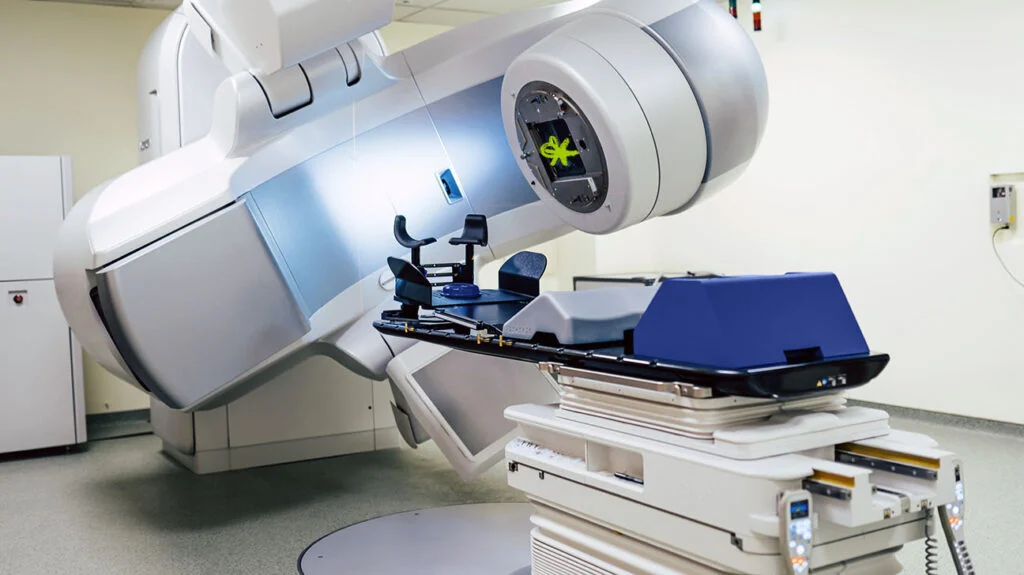Non-small cell lung cancer (NSCLC) is the most common type of lung cancer, accounting for about 85% of all lung cancer cases. As a prevalent form of cancer, it presents a significant challenge to oncologists worldwide. One of the primary treatments for NSCLC is radiation therapy, a powerful tool in the fight against cancer. This blog post aims to shed light on what radiation therapy entails, how it works for NSCLC, and what patients can expect during treatment.
What is Radiation Therapy?
Radiation therapy, also known as radiotherapy, uses high-energy rays or particles to destroy cancer cells. It can be delivered externally via external beam radiation or internally through brachytherapy. The goal is to target and destroy cancerous cells while minimizing damage to surrounding healthy tissues.
How Does Radiation Therapy Work for NSCLC?
Radiation therapy for NSCLC can be used in various stages and scenarios:
- Early-Stage NSCLC: For patients with early-stage NSCLC who are not candidates for surgery, radiation therapy can be the primary treatment. Stereotactic body radiotherapy (SBRT) is a highly precise form of radiation therapy used in these cases, delivering high doses of radiation to the tumor while sparing healthy tissue.
- Locally Advanced NSCLC: For patients with locally advanced NSCLC, radiation therapy is often combined with chemotherapy (chemoradiation) to enhance the effectiveness of both treatments. This approach helps shrink tumors, making them more manageable and potentially operable.
- Advanced or Metastatic NSCLC: In cases where cancer has spread beyond the lungs, radiation therapy is used palliatively to relieve symptoms such as pain, bleeding, or difficulty breathing. Palliative radiation aims to improve the patient’s quality of life.
Types of Radiation Therapy for NSCLC
- External Beam Radiation Therapy (EBRT): This is the most common form of radiation therapy for NSCLC. It involves using a machine called a linear accelerator to direct high-energy beams at the cancer. Techniques such as intensity-modulated radiation therapy (IMRT) and image-guided radiation therapy (IGRT) allow for precise targeting of the tumor.
- Stereotactic Body Radiotherapy (SBRT): SBRT delivers high doses of radiation to the tumor in fewer sessions compared to conventional radiation therapy. It is highly effective for small, well-defined tumors and is associated with fewer side effects.
- Proton Therapy: Proton therapy is a type of external beam radiation that uses protons instead of X-rays. Protons can be more precisely controlled, potentially reducing damage to surrounding healthy tissues. This can be particularly beneficial for tumors located near critical structures.
The Radiation Therapy Process
- Consultation and Planning: The process begins with a consultation with a radiation oncologist. Imaging studies such as CT scans, PET scans, or MRIs are performed to determine the exact location and size of the tumor. This information is used to create a personalized treatment plan.
- Simulation: Before treatment begins, a simulation session is conducted to map out the precise area to be treated. The patient is positioned in a way that can be consistently reproduced for each treatment session.
- Treatment Sessions: Radiation therapy is typically delivered over several weeks, with patients receiving treatments five days a week. Each session lasts only a few minutes, although the setup time may be longer.
- Side Effects Management: Common side effects of radiation therapy for NSCLC include fatigue, skin irritation, and difficulty swallowing. The healthcare team will provide strategies to manage these side effects and ensure the patient’s comfort.
Advances in Radiation Therapy for NSCLC
Recent advancements in radiation therapy have significantly improved outcomes for NSCLC patients. Techniques such as four-dimensional (4D) radiation therapy account for tumor movement due to breathing, allowing for more accurate targeting. Additionally, ongoing research is exploring the combination of radiation therapy with immunotherapy to enhance the body’s immune response against cancer cells.
Conclusion
Radiation therapy is a cornerstone in the treatment of non-small cell lung cancer, offering hope to many patients. With continuous advancements in technology and techniques, radiation therapy is becoming increasingly effective and precise. If you or a loved one is facing NSCLC, understanding the role of radiation therapy can help in making informed decisions and navigating the treatment journey with confidence. Always consult with your oncology team to determine the best course of action tailored to your specific condition.


